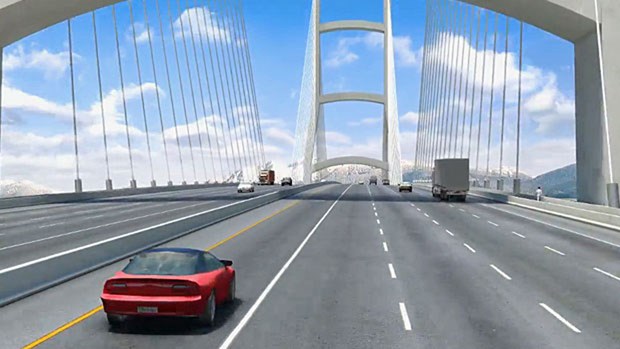There has been a great deal of criticism of the George Massey Tunnel Replacement Project. Unfortunately, these criticisms and accusations cheapen the conversation and deny the work that has been done with and by the Metro region municipalities, which has included more than 100 meetings with the City of Richmond, 90 with the Corporation of Delta, and 35 meetings with Metro Vancouver since 2012, with three phases of public consultations, and more than 7,000 pages of information that have been made public.
The George Massey Tunnel, built in the late 1950s, is nearing the end of its life and is an impediment to safe, efficient movement of people and goods along Highway 99. The tunnel has about 10 years left before the major components will need to be replaced. While some seismic upgrades were done in 2008, further seismic upgrades are not possible without the risk of damaging the tunnel. This means a moderately significant earthquake could seriously damage or destroy the tunnel. To do less than replace the tunnel would shamefully and irresponsibly risk the safety of daily commuters.
The replacement bridge, which will have eight general lanes and two dedicated transit/HOV lanes, will reduce collisions by an estimated 35 per cent by making merging safer; wider lanes and shoulders will also improve emergency response times and safety for commuters.
The bridge will help alleviate the biggest bottleneck in British Columbia. It will eliminate more than one million hours of vehicle idling each year, equivalent to 13,000 tonnes of greenhouse gas emissions. More than 200 lane-kilometres of new and improved highway will be put to use, relieving congestion for the approximately 80,000 vehicles that use the tunnel each day. To assist the 10,000 transit passengers that use the tunnel daily, the project will add two integrated transit stops at the Steveston and Highway 17A interchanges, and 50 kilometres of dedicated transit/HOV lanes, with enhanced connections to the Canada Line. The bridge will also have multi-use pathways on either side for cyclists and pedestrians, making it a functional piece of infrastructure for virtually all commuters and travellers.
Construction will start in 2017 and the bridge will open in 2022. During that time, the project will create an estimated 9,000 direct jobs and 8,000 indirect jobs in construction and in local businesses that supply and support the construction industry. Because of its proximity to the project, Richmond’s businesses will be primary beneficiaries of economic activity during construction, and of increased long-term economic activity. Richmond residents will also benefit from the new tunnel’s reduced congestion and improved access to points south of the Fraser River, as approximately 60 per cent of the current tunnel traffic originates from or terminates in Richmond. Furthermore, BC Stats estimates that the City of Richmond will benefit greatly from increased local government tax revenues as a result of the tunnel replacement.
It is heartening to see so much interest in infrastructure projects. The benefits of the project, which include seismic safety, additional transit, environmental protection, and added capacity, as well as economic growth, will be felt in Richmond and Delta, as well as across the Fraser Valley and Metro Vancouver.
John Yap is the MLA for Richmond-Steveston



